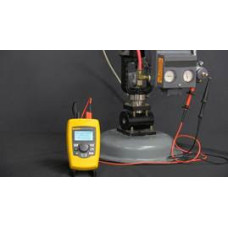Fluke 710 MA Loop Valve Tester Value Testing Loop Calibrator with Hart
The Fluke 710 Valve Testing Loop Calibrator is designed to enable users to perform quick, easy tests on HART smart control valves. Featuring built-in test procedures and an intuitive user interface, the 710 allows users to quickly and easily perform valve tests, while the valve test quick-check results provide at-a-glance diagnostics help you make maintenance decisions faster than ever. The valve health quick-check results let you know whether your valve is in good, marginal or in bad operating condition so you can quickly decide whether additional maintenance is necessary
Valve testing and HART communication in a precision loop calibrator With the 710 Valve Testing Loop Calibrator’s built in HART communication function, users can source a 4-20 mA signal to cause the smart control valve to move, while simultaneously interpreting the valve’s HART feedback signal to determine whether the valve is moving to the expected position. In addition to positional information, the measured pressure delivered from the valve’s internal I/P (which moves the valve) can be determined through the HART communication protocol.The 710 has built-in test procedures that automatically increase and change the mA signal while monitoring the HART position and pressure feedback from the control valve, giving you a better overall picture of valve health at the simple push of a button
Pre-configured valve tests, at-a-glance answers Valve test routines built into the 710 include:• Manual testing; manually change the mA signal and view the HART position and pressure variable information• Full range ramping of the mA signal from 4 to 20 to 4 mA while recording the 0-100-0% position, or the pressures applied that move the valve from 0-100-0% • Stepping the mA signal on the input to the valve in steps and evaluating the valves response to the mA input changes• Speed tests to determine how fast the valve can open or close• Bump and partial stroke tests that help test valves over a portion of their range so they can be tested in a live process


